Grow Kohlrabi at Home? Absolutely! And I’m here to tell you it’s easier than you think. Forget those bland, store-bought kohlrabi – imagine biting into a crisp, slightly sweet, and incredibly fresh kohlrabi grown right in your own backyard. Sounds amazing, right?
Kohlrabi, sometimes called a German turnip, has a fascinating history, dating back to the Roman Empire. While it might not be as widely known as its cabbage cousins, this unique vegetable has been a staple in European and Asian cuisines for centuries. It’s a nutritional powerhouse, packed with Vitamin C, fiber, and antioxidants, making it a fantastic addition to any diet.
But why should you bother learning how to grow kohlrabi at home? Well, for starters, homegrown produce always tastes better! Plus, you have complete control over what goes into your food, avoiding harmful pesticides and ensuring the freshest possible flavor. In today’s world, where healthy eating and sustainable living are more important than ever, growing your own food is a rewarding and empowering experience. I’m going to share some simple DIY tricks and hacks that will have you harvesting delicious kohlrabi in no time, even if you’re a complete beginner. Let’s get started!
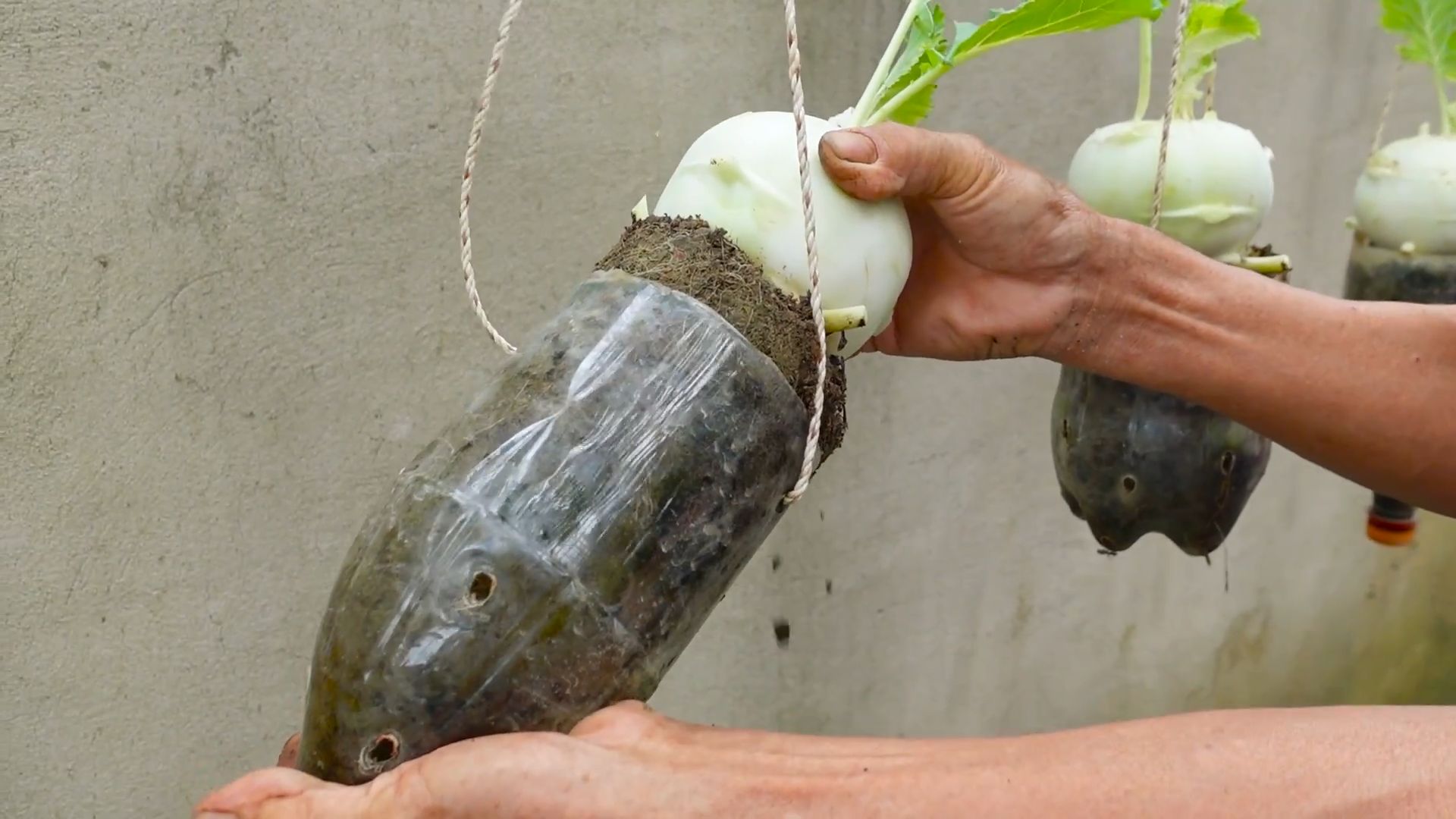
Growing Kohlrabi: A Beginner’s Guide to This Underrated Veggie
Hey there, fellow gardening enthusiasts! I’m so excited to share my experience growing kohlrabi. It’s a vegetable that often gets overlooked, but trust me, it’s incredibly rewarding to grow and delicious to eat. Think of it as a cross between a turnip and a cabbage, with a mild, slightly sweet flavor. Plus, it’s packed with nutrients! So, let’s dive into how you can grow your own kohlrabi at home.
Choosing Your Kohlrabi Variety
Before we get our hands dirty, let’s talk about kohlrabi varieties. There are a few popular choices, and your selection will depend on your climate and personal preference.
* Early White Vienna: This is a classic, fast-maturing variety that’s perfect for early harvests. It produces pale green bulbs.
* Early Purple Vienna: Similar to the White Vienna, but with a beautiful purple hue. It adds a pop of color to your garden!
* Grand Duke: A hybrid variety known for its excellent disease resistance and large, uniform bulbs.
* Gigante: As the name suggests, this variety produces exceptionally large bulbs, but it can take longer to mature.
I personally love growing both Early White and Early Purple Vienna for the variety and the visual appeal.
Getting Started: Planting Kohlrabi
Kohlrabi is a cool-season crop, which means it thrives in cooler temperatures. Timing is key to a successful harvest.
* When to Plant:
* Spring Planting: Start seeds indoors 4-6 weeks before the last expected frost. You can also direct sow seeds outdoors 2-3 weeks before the last frost.
* Fall Planting: Direct sow seeds outdoors 6-8 weeks before the first expected frost.
* Where to Plant: Kohlrabi needs at least 6 hours of sunlight per day. Choose a location in your garden that receives plenty of sun.
* Soil Preparation: Kohlrabi prefers well-drained, fertile soil with a pH between 6.0 and 7.5. Amend your soil with compost or well-rotted manure to improve drainage and fertility.
Step-by-Step Planting Guide
Now, let’s get down to the nitty-gritty of planting.
1. Starting Seeds Indoors (Optional):
* Fill seed trays or small pots with a seed-starting mix.
* Sow seeds about 1/4 inch deep.
* Water gently and keep the soil consistently moist.
* Place the trays in a warm location (around 70°F) or use a heat mat.
* Once the seedlings emerge (usually within 5-7 days), move them to a sunny location or under grow lights.
* Thin the seedlings to one plant per cell or pot.
* Harden off the seedlings by gradually exposing them to outdoor conditions for a week before transplanting.
2. Direct Sowing Seeds Outdoors:
* Prepare the soil by removing any weeds and rocks.
* Create shallow furrows about 1/2 inch deep.
* Sow seeds about 1 inch apart in the furrows.
* Cover the seeds with soil and water gently.
* Once the seedlings emerge, thin them to 4-6 inches apart.
3. Transplanting Seedlings:
* Dig holes that are slightly larger than the root balls of the seedlings.
* Gently remove the seedlings from their containers.
* Place the seedlings in the holes and backfill with soil.
* Space the plants 4-6 inches apart.
* Water thoroughly after transplanting.
Caring for Your Kohlrabi Plants
Once your kohlrabi plants are in the ground, it’s important to provide them with the care they need to thrive.
* Watering: Kohlrabi needs consistent moisture, especially during bulb development. Water deeply whenever the top inch of soil feels dry. Avoid overwatering, as this can lead to rot.
* Fertilizing: Feed your kohlrabi plants with a balanced fertilizer every 2-3 weeks. I like to use a liquid fertilizer diluted to half strength.
* Weeding: Keep the area around your kohlrabi plants free of weeds. Weeds compete with the plants for nutrients and water.
* Mulching: Apply a layer of mulch around the plants to help retain moisture, suppress weeds, and regulate soil temperature. Straw, wood chips, or shredded leaves work well.
* Pest Control: Kohlrabi can be susceptible to pests like cabbage worms, aphids, and flea beetles.
* Cabbage Worms: Handpick them off the plants or use Bacillus thuringiensis (Bt), a natural insecticide.
* Aphids: Spray the plants with a strong stream of water or use insecticidal soap.
* Flea Beetles: Cover the plants with row covers or use diatomaceous earth.
Harvesting Your Kohlrabi
The best part of growing kohlrabi is, of course, the harvest!
* When to Harvest: Kohlrabi is typically ready to harvest 50-60 days after planting. The bulbs should be about 2-3 inches in diameter. Don’t let them get too large, as they can become tough and woody.
* How to Harvest: Use a sharp knife to cut the bulb from the stem just above the soil line.
* Storing Kohlrabi: Remove the leaves and store the bulbs in the refrigerator for up to several weeks. The leaves are also edible and can be cooked like spinach or kale.
Troubleshooting Common Problems
Even with the best care, you might encounter some problems while growing kohlrabi. Here are a few common issues and how to address them:
* Bolting (Premature Flowering): Bolting can occur if the plants are exposed to extreme temperature fluctuations or stress. To prevent bolting, choose bolt-resistant varieties, provide consistent watering, and protect the plants from extreme heat or cold.
* Cracking Bulbs: Cracking can be caused by inconsistent watering or rapid growth. Ensure consistent watering and avoid over-fertilizing.
* Pest Damage: As mentioned earlier, kohlrabi can be susceptible to pests. Regularly inspect your plants for signs of infestation and take appropriate action.
Delicious Ways to Enjoy Your Kohlrabi
Now that you’ve harvested your kohlrabi, it’s time to enjoy the fruits (or rather, vegetables) of your labor! Kohlrabi is incredibly versatile and can be eaten raw or cooked.
* Raw: Peel the bulb and slice it thinly. It’s delicious in salads, slaws, or as a crunchy snack.
* Roasted: Toss kohlrabi cubes with olive oil, salt, and pepper, and roast them in the oven until tender and slightly caramelized.
* Steamed: Steam kohlrabi until tender and serve it with butter or your favorite sauce.
* Mashed: Mash cooked kohlrabi with potatoes or other root vegetables for a creamy and flavorful side dish.
* Stir-fried: Add kohlrabi to stir-fries for a crunchy and nutritious addition.
* Kohlrabi Fries: Cut kohlrabi into fry shapes, toss with oil and spices, and bake until crispy.
I personally love grating kohlrabi into salads for a refreshing crunch. I also enjoy roasting it with other root vegetables for a hearty and flavorful side dish. Don’t forget the leaves! They’re great sautéed with garlic and olive oil.
Tips for a Bountiful Harvest
Here are a few extra tips to help you maximize your kohlrabi harvest:
* Succession Planting: Plant kohlrabi seeds every 2-3 weeks to ensure a continuous harvest throughout the growing season.
* Choose the Right Variety: Select varieties that are well-suited to your climate and growing conditions.
* Provide Adequate Sunlight: Kohlrabi needs at least 6 hours of sunlight per day.
* Maintain Consistent Moisture: Water deeply and regularly, especially during bulb development.
* Fertilize Regularly: Feed your plants with a balanced fertilizer every 2-3 weeks.
* Protect from Pests: Regularly inspect your plants for pests and take appropriate action.
* Harvest at the Right Time: Harvest the bulbs when they are 2-3 inches in diameter to ensure the best flavor and texture.
Growing kohlrabi is a fun and rewarding experience. With a little bit of planning and care, you can enjoy a bountiful harvest of this delicious and nutritious vegetable. So, get out there and start planting! Happy gardening!
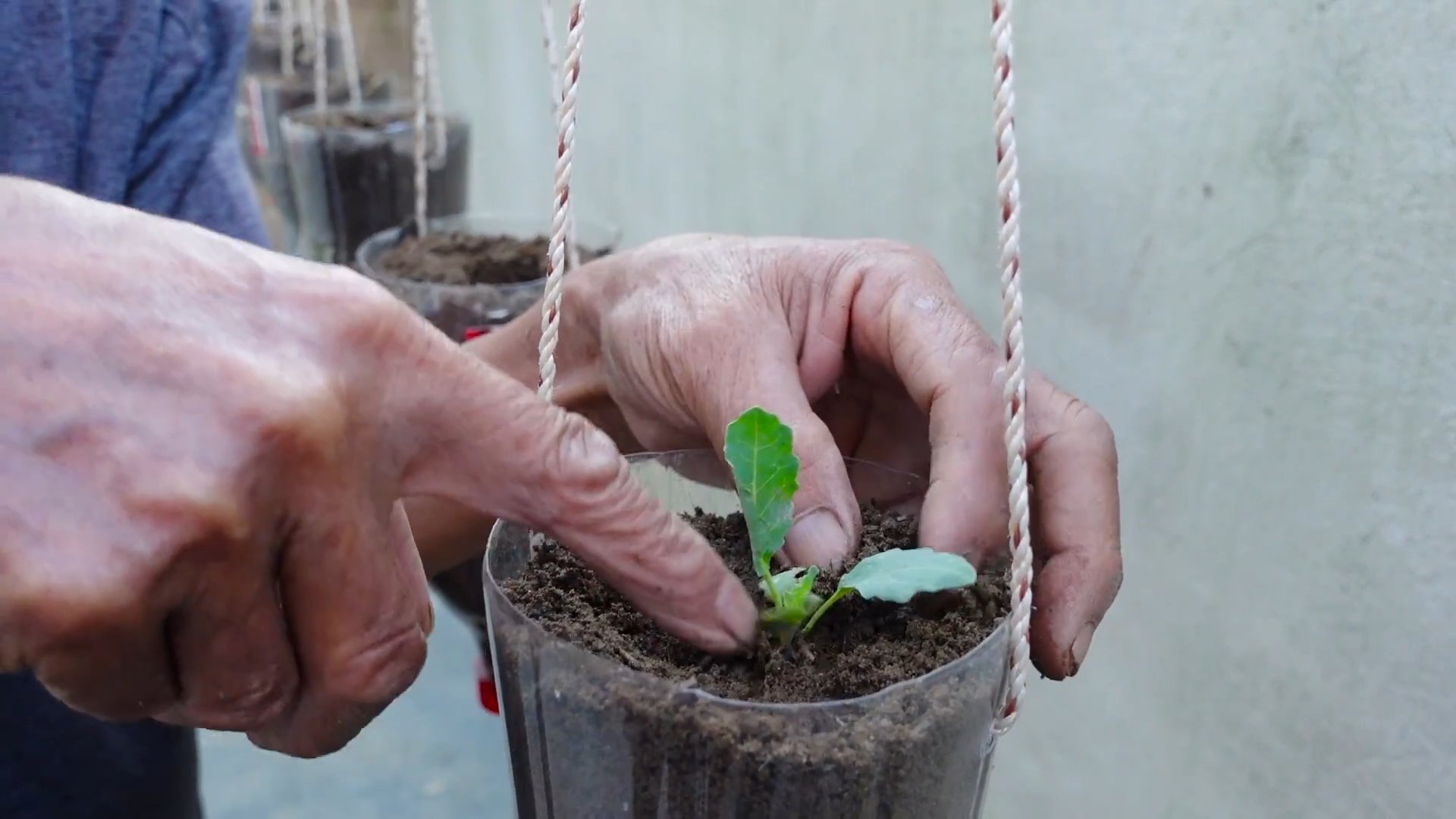
Conclusion
So, there you have it! Growing kohlrabi at home is not only achievable, but it’s also a rewarding experience that brings fresh, flavorful produce right to your table. We’ve walked through the essential steps, from selecting the right variety to harvesting your bounty. But why should you embark on this gardening adventure?
Firstly, the taste of homegrown kohlrabi is simply unmatched. The crisp, slightly sweet flavor is far superior to anything you’ll find in the grocery store. You control the growing conditions, ensuring optimal flavor development. Plus, you know exactly what’s gone into your kohlrabi – no pesticides or harmful chemicals, just pure, natural goodness.
Secondly, growing your own kohlrabi is incredibly cost-effective. A single packet of seeds can yield a substantial harvest, saving you money on your grocery bill. And let’s not forget the satisfaction of nurturing a plant from seed to table. It’s a truly fulfilling experience that connects you to nature and the food you eat.
Thirdly, kohlrabi is a nutritional powerhouse. Packed with vitamins, minerals, and fiber, it’s a healthy addition to any diet. By growing your own, you can ensure you always have a fresh supply of this nutritious vegetable on hand.
But the benefits don’t stop there. Growing kohlrabi at home is also a great way to get some exercise, relieve stress, and connect with your community. Share your harvest with friends and neighbors, and spread the joy of homegrown produce.
Now, let’s talk about variations. While we’ve covered the basics, there are plenty of ways to customize your kohlrabi growing experience. Consider experimenting with different varieties, such as ‘Early White Vienna’ for its mild flavor or ‘Purple Vienna’ for its vibrant color. You can also try growing kohlrabi in containers if you have limited space. Just be sure to choose a pot that’s at least 12 inches in diameter and filled with well-draining potting mix.
Another fun variation is to grow kohlrabi for its leaves as well as its bulb. Kohlrabi leaves are edible and can be used in salads, stir-fries, or soups. They have a slightly peppery flavor that adds a unique twist to your dishes.
And don’t forget about companion planting! Kohlrabi grows well alongside other vegetables like onions, garlic, and herbs. These companion plants can help deter pests and improve the overall health of your kohlrabi plants.
So, are you ready to give it a try? We encourage you to take the plunge and start growing kohlrabi at home. It’s easier than you think, and the rewards are well worth the effort. Remember to follow the steps outlined in this guide, and don’t be afraid to experiment and find what works best for you.
We’re confident that you’ll be amazed by the flavor and freshness of your homegrown kohlrabi. And we’d love to hear about your experience! Share your photos, tips, and stories with us in the comments below. Let’s create a community of kohlrabi growers and inspire others to join the fun. Happy gardening!
Frequently Asked Questions (FAQs)
What is kohlrabi, and what does it taste like?
Kohlrabi, sometimes called a German turnip, is a cruciferous vegetable related to cabbage, broccoli, and kale. It features a bulbous stem that grows above ground and edible leaves. The taste is often described as a cross between a turnip and a cabbage, with a mild, slightly sweet flavor and a crisp texture. Younger kohlrabi bulbs tend to be sweeter and more tender.
When is the best time to plant kohlrabi?
The best time to plant kohlrabi depends on your climate. In cooler regions, you can start seeds indoors 4-6 weeks before the last expected frost and transplant them outdoors 2-3 weeks before the last frost. For warmer climates, plant kohlrabi in the fall for a winter harvest. Kohlrabi prefers cool weather and can bolt (go to seed) in hot temperatures. Succession planting every 2-3 weeks will ensure a continuous harvest.
How much sunlight does kohlrabi need?
Kohlrabi needs at least 6 hours of sunlight per day to thrive. Choose a location in your garden that receives full sun for optimal growth and bulb development. If you’re growing kohlrabi in containers, make sure to place them in a sunny spot.
What kind of soil does kohlrabi prefer?
Kohlrabi prefers well-draining soil that is rich in organic matter. Amend your soil with compost or aged manure before planting to improve its fertility and drainage. The ideal soil pH for kohlrabi is between 6.0 and 7.5.
How often should I water kohlrabi?
Kohlrabi needs consistent moisture to grow properly. Water deeply and regularly, especially during dry periods. Aim to keep the soil consistently moist but not waterlogged. Mulching around the plants can help retain moisture and suppress weeds.
What are some common pests and diseases that affect kohlrabi?
Common pests that affect kohlrabi include cabbage worms, aphids, and flea beetles. You can control these pests with organic insecticides like neem oil or insecticidal soap. Diseases that can affect kohlrabi include clubroot and black rot. To prevent these diseases, practice crop rotation and avoid planting kohlrabi in the same location year after year. Ensure good air circulation around the plants to reduce humidity and the risk of fungal diseases.
How do I know when kohlrabi is ready to harvest?
Kohlrabi is typically ready to harvest when the bulb reaches 2-3 inches in diameter. Larger bulbs can become tough and woody. To harvest, simply cut the bulb from the stem with a sharp knife. You can also harvest the leaves, which are edible and can be used in salads or cooked like spinach.
Can I grow kohlrabi in containers?
Yes, you can grow kohlrabi in containers. Choose a pot that is at least 12 inches in diameter and filled with well-draining potting mix. Make sure the container has drainage holes to prevent waterlogging. Water regularly and fertilize every 2-3 weeks with a balanced fertilizer.
How do I store kohlrabi after harvesting?
After harvesting, remove the leaves from the bulb and store them separately. Kohlrabi bulbs can be stored in the refrigerator for several weeks. Wrap them in a damp paper towel and place them in a plastic bag to prevent them from drying out. Kohlrabi leaves can be stored in the refrigerator for a few days.
What are some ways to use kohlrabi in cooking?
Kohlrabi can be eaten raw or cooked. Raw kohlrabi can be grated into salads or used as a crudité with dips. Cooked kohlrabi can be steamed, roasted, stir-fried, or added to soups and stews. The leaves can be cooked like spinach or added to salads. Kohlrabi pairs well with herbs like dill, parsley, and chives.
Is kohlrabi a good source of nutrients?
Yes, kohlrabi is a good source of nutrients. It is low in calories and high in fiber, vitamin C, and potassium. It also contains antioxidants and other beneficial compounds. Adding kohlrabi to your diet can help improve your overall health and well-being.
Can I freeze kohlrabi?
Yes, you can freeze kohlrabi, but it’s best to blanch it first to preserve its texture and flavor. Peel and cut the kohlrabi into cubes or slices. Blanch it in boiling water for 2-3 minutes, then transfer it to an ice bath to stop the cooking process. Drain well and freeze in airtight containers or freezer bags. Frozen kohlrabi can be stored for up to 8-12 months.
What are some good companion plants for kohlrabi?
Good companion plants for kohlrabi include onions, garlic, rosemary, sage, thyme, and chamomile. These plants can help deter pests and improve the overall health of your kohlrabi plants. Avoid planting kohlrabi near tomatoes, strawberries, or beans, as they can compete for nutrients or attract pests.
My kohlrabi bolted (went to seed). What did I do wrong?
Kohlrabi can bolt if it experiences stress, such as extreme heat, drought, or inconsistent watering. To prevent bolting, plant kohlrabi in the spring or fall when temperatures are cooler. Water regularly and mulch around the plants to retain moisture. Choose bolt-resistant varieties if you live in a warm climate.

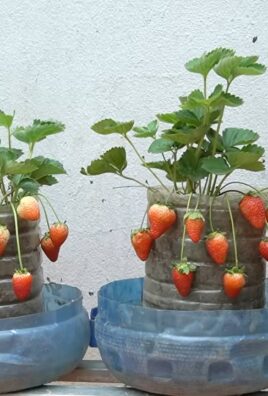
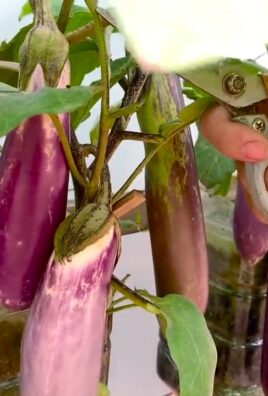
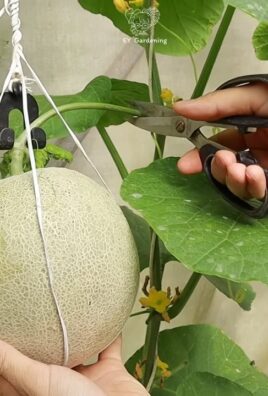
Leave a Comment